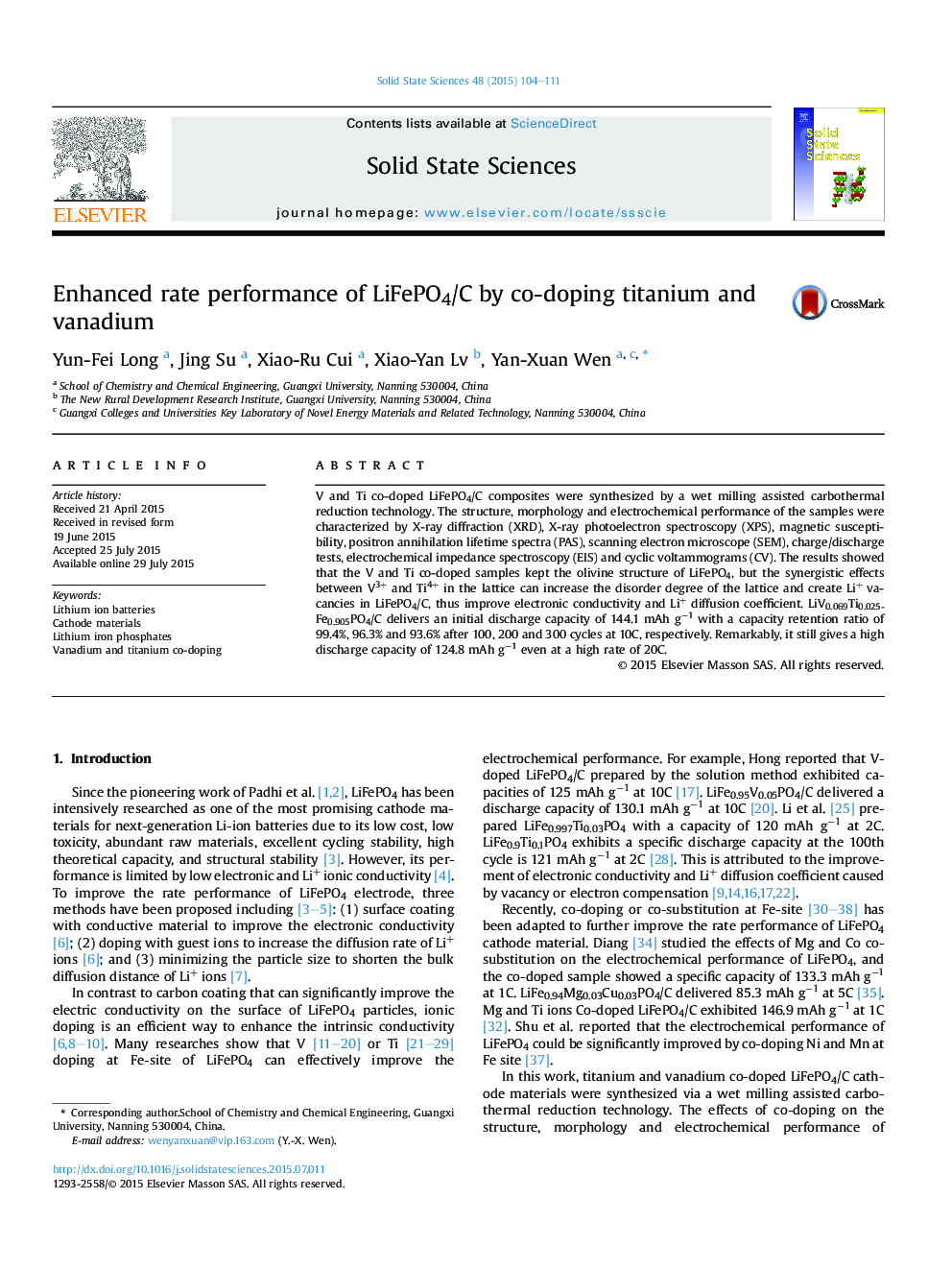| Article ID | Journal | Published Year | Pages | File Type |
|---|---|---|---|---|
| 1504138 | Solid State Sciences | 2015 | 8 Pages |
•LiVxTiyFe1−x−yPO4/C is synthesized by a wet milling-carbothermal reduction method.•LiV0.069Ti0.025Fe0.905PO4/C exhibits a good rate performance and cycle stability.•The improved performance can be ascribed to the synergistic effects of V3+ and Ti4+.
V and Ti co-doped LiFePO4/C composites were synthesized by a wet milling assisted carbothermal reduction technology. The structure, morphology and electrochemical performance of the samples were characterized by X-ray diffraction (XRD), X-ray photoelectron spectroscopy (XPS), magnetic susceptibility, positron annihilation lifetime spectra (PAS), scanning electron microscope (SEM), charge/discharge tests, electrochemical impedance spectroscopy (EIS) and cyclic voltammograms (CV). The results showed that the V and Ti co-doped samples kept the olivine structure of LiFePO4, but the synergistic effects between V3+ and Ti4+ in the lattice can increase the disorder degree of the lattice and create Li+ vacancies in LiFePO4/C, thus improve electronic conductivity and Li+ diffusion coefficient. LiV0.069Ti0.025Fe0.905PO4/C delivers an initial discharge capacity of 144.1 mAh g−1 with a capacity retention ratio of 99.4%, 96.3% and 93.6% after 100, 200 and 300 cycles at 10C, respectively. Remarkably, it still gives a high discharge capacity of 124.8 mAh g−1 even at a high rate of 20C.
Graphical abstractFigure optionsDownload full-size imageDownload as PowerPoint slide
